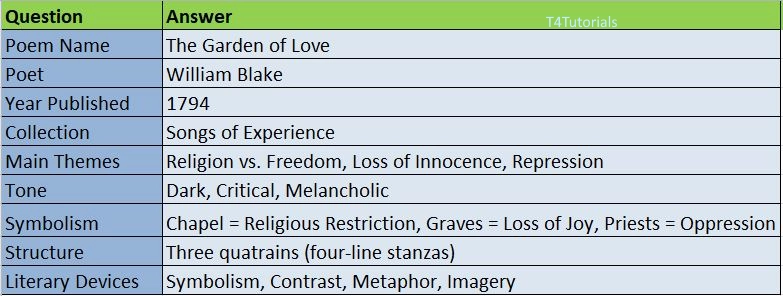Summary:
The Garden of Love is a poem from Songs of Experience (1794) by William Blake, depicting the corruption of innocence by institutionalized religion.- The speaker visits the Garden of Love, expecting it to be a place of joy and freedom, but instead finds a chapel built in its place.
- The chapel has “Thou Shalt Not” written over the door, symbolizing restrictive religious doctrines.
- Instead of children playing freely, the garden is now filled with graves and priests in black robes, signifying death, repression, and sorrow.
- The poem criticizes organized religion, suggesting that it destroys natural human joy, love, and freedom.
- It contrasts the innocence of childhood with the harsh restrictions of adulthood, shaped by religious and societal rules.

10
Score: 0
Attempted: 0/10
Subscribe
| Question | Answer |
| Poem Name | The Garden of Love |
| Poet | William Blake |
| Year Published | 1794 |
| Collection | Songs of Experience |
| Main Themes | Religion vs. Freedom, Loss of Innocence, Repression |
| Tone | Dark, Critical, Melancholic |
| Symbolism | Chapel = Religious Restriction, Graves = Loss of Joy, Priests = Oppression |
| Structure | Three quatrains (four-line stanzas) |
| Literary Devices | Symbolism, Contrast, Metaphor, Imagery |